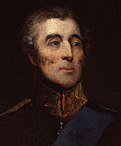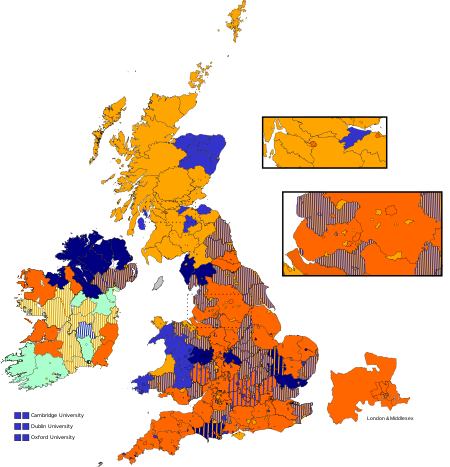United Kingdom general election, 1832
|
|
|||||||||||||||||||||||||||||||||||||||||||||||||||
|
|||||||||||||||||||||||||||||||||||||||||||||||||||
|
|||||||||||||||||||||||||||||||||||||||||||||||||||
|
|
|||||||||||||||||||||||||||||||||||||||||||||||||||
| Colours denote the winning party. | |||||||||||||||||||||||||||||||||||||||||||||||||||
|
|||||||||||||||||||||||||||||||||||||||||||||||||||
| 1830 election • MPs |
| 1831 election • MPs |
| 1832 election • MPs |
| 1835 election • MPs |
| 1837 election • MPs |
The 1832 United Kingdom general election, the first after the Reform Act, saw the Whigs win a large majority, with the Tories winning less than 30% of the vote.
The Earl Grey had been Prime Minister since 22 November 1830. His headed the first predominantly Whig administration since the Ministry of all the Talents in 1806–1807.
In addition to the Whigs themselves, Grey was supported by Radical and other allied politicians. The Whigs and their allies were gradually coming to be referred to as Liberals, but no formal Liberal Party had been established at the time of this election, so all the politicians supporting the ministry are referred to as Whig in the above results.
The government Leader of the House of Commons since 1830, was Viscount Althorp (the heir of the Earl Spencer), who also served as Chancellor of the Exchequer.
...
Wikipedia




